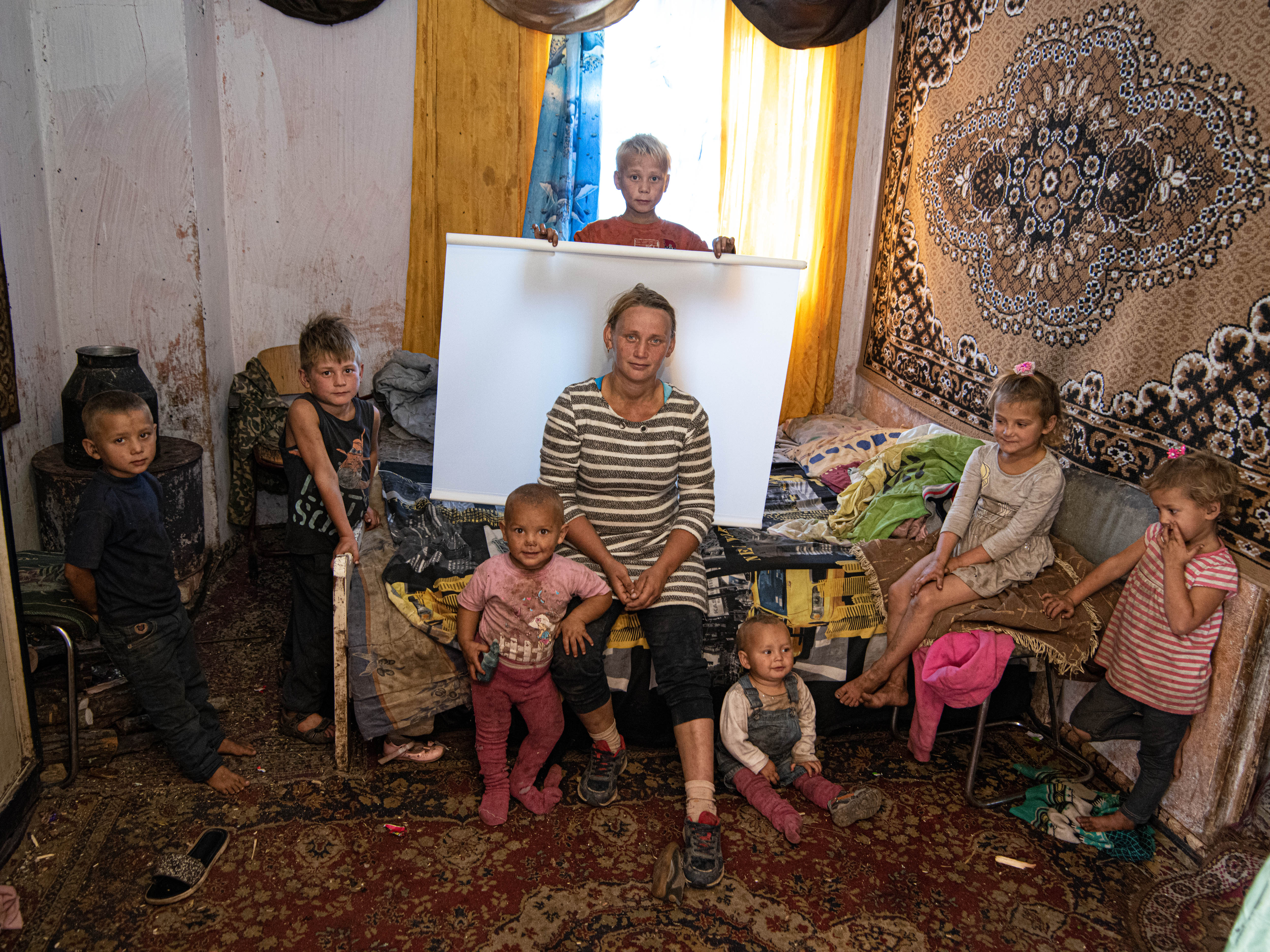Most persons at risk of statelessness are identified by UNHCR partners as members of the Roma minority, children born in the non-government controlled areas of Donetsk and Luhansk regions (approximately 54,673 as of 31.12. 2019), homeless persons, older people holding Soviet passports (particularly in rural areas), and persons imprisoned or released without any identity documents. In addition, there are those who arrived in Ukraine from other former Soviet republics after the collapse of the USSR who do not hold any nationality due to conflicting nationality laws or gaps in nationality legislation.
In Zakarpattia region, Roma are the fifth largest national minority, comprising of some 80,000 persons (one third of the Roma population of Ukraine) residing in 78 settlements. Around 10 per cent of them do not have passports or birth certificates.
In 2013, Ukraine acceded to the 1954 UN Convention relating to the Status of Stateless Persons and to the 1961 UN Convention on the Reduction of Statelessness. On 16 June 2020, the Parliament of Ukraine adopted the Law “On amending Certain Legislative Acts of Ukraine regarding Recognition as a Stateless Person”. On 18 July 2020 the law came into force. With the introduction of the procedure, recognized stateless people will be able to regularize their stay by obtaining temporary residence permits. They will have the right to freedom of movement, to work, and to access education and health services. Adoption of a by-law on statelessness determination procedure is needed for the statelessness determination procedure to become operative. The by-law is expected to be adopted on 18 October 2020.
Between June 2017 and 31 December 2019, UNHCR and its NGO partners implemented projects on the elimination of statelessness providing legal assistance to 2,284 stateless persons or persons at risk of statelessness in Donetsk, Kharkiv, Kyiv, Odesa, Zakarpatska and Luhansk regions. Those assisted received information related to establishing identity, acquisition or confirmation of nationality, and some were issued passports or acquired Ukrainian nationality. During the 31 months of project implementation, 369 beneficiaries received passports (including 43 passports of others countries); 124 persons received birth certificates; 396 people received duplicates of birth certificates due to their loss.
Useful material regarding statelessness in Ukraine:
-The Law of Ukraine “On amending Certain Legislative Acts of Ukraine regarding Recognition as a Stateless Person” (eng; ukr)
–UNHCR welcomes new Ukrainian statelessness law set to end legal limbo for thousands
–‘With this law, I will finally get a sense of how it is to exist’

“Photo on the Passport,” a photo project of the UN Refugee Agency on stateless people, is dedicated to the 5th anniversary of the #IBelong campaign (the global campaign to eradicate statelessness by 2024). Observance of this campaign is an opportunity to draw attention to the needs and problems of people who are actually “invisible” to society and the state.
Well-known Ukrainian photographer Oleksandr Chekmenev has joined the UNHCR campaign to eradicate statelessness in Ukraine. He has traveled to the remote areas of Ukraine to meet with residents of Roma settlements who do not have a Ukrainian passport, as well as with pensioners who still hold Soviet passports.
The photo project “Photo on the Passport” has also become a symbolic continuation of the state passportisation campaign in 1994. After the collapse of the Soviet Union, it became necessary in the newly independent Ukraine to replace old Soviet passports with new Ukrainian ones. There was a rush to accomplish this in the shortest possible time. All Ukrainians were required to get a new passport within a year. Many citizens were shut-ins, elderly, and bedridden. Therefore, in order to take their passport pictures someone had to go from door to door with a camera. In 1995, the social services office of the city of Luhansk (in Eastern Ukraine) found that they needed a volunteer photographer. Oleksandr Chekmenev was chosen for this role. However, he didn’t just take their passport pictures. By using a camera with a wide angle, he showed the real conditions of their lives.

